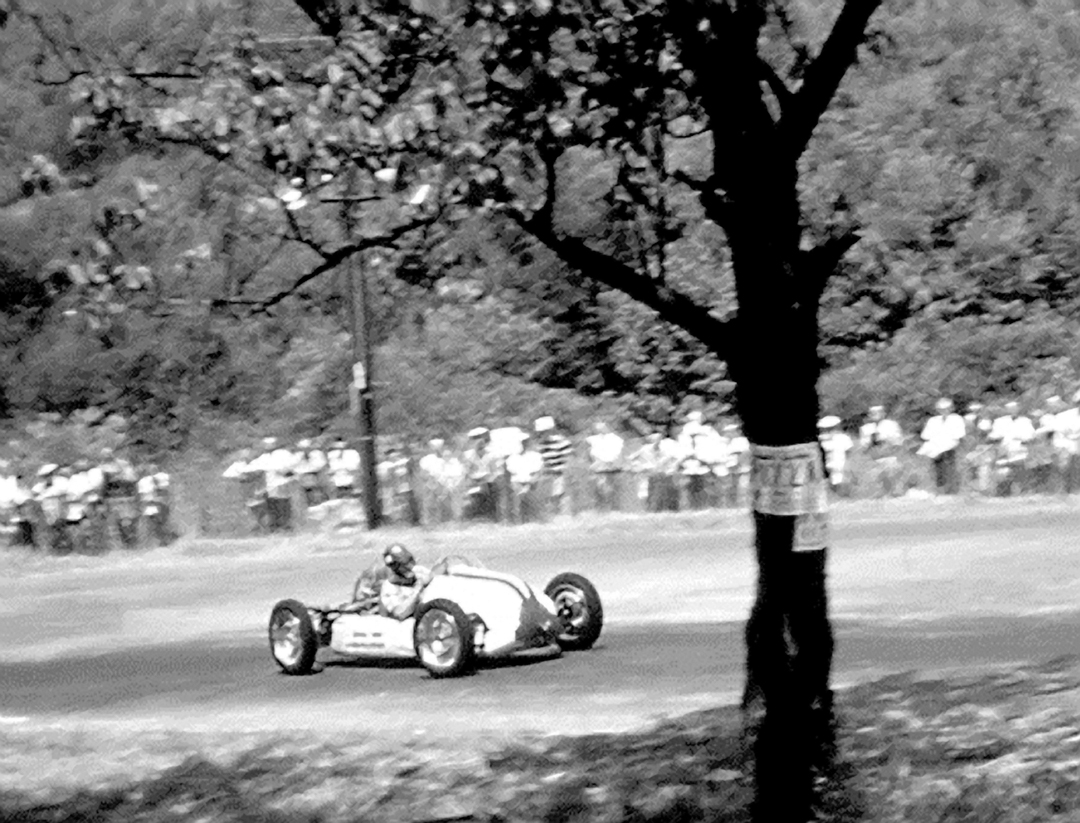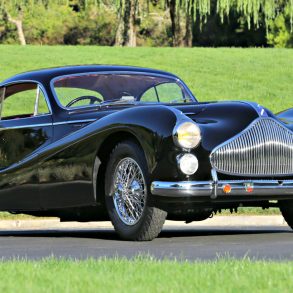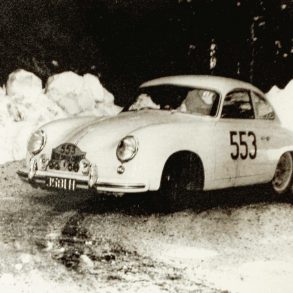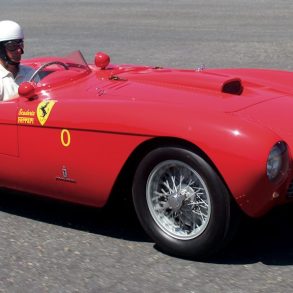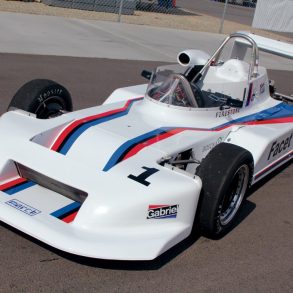The early post-war interest in small displacement automobile racing in Europe was fueled by enthusiasm and petrol rationing. Money was tight and 500-cc home-spun race cars powered by motorcycle engines were relatively affordable. These cars were built on weight-sparing tubeframe chassis and were most often motivated by half-liter chain-driven JAP and Norton rattlers. This genre of racing became so popular in Europe that the Fédération Internationale de l’Automobile (FIA) added a Formula Three Class to its roster in 1950. And while F3 provided an ideal platform for the budget-minded hobbyist racer, it also served as a stepping stone for such greats as Stirling Moss, Jim Russell, Ken Tyrrell, and Peter Collins.
Over time, shade-tree specials gave way to professionally built F3 racing machines and a new industry was born. Cooper rapidly emerged as the dominant constructor, but several other manufacturers also sold well-built, competitive racers including Emeryson, Arnot, Deutsch-Bonnet, Monopoletta, Kieft, Scampolo, JBS, among others. A lesser-known Formula 3 builder opened its doors in Sweden, and that was Effyh.
Brothers Folke and Yngve Håkansson of Malmö, Sweden were busy working as mechanics in the heavy trucking equipment industry. Following WWII they became interested in building competition cars and migrated toward the growing sport of F3. The company was named Effyh after the brother’s initials (FYH). Two factory-built models were available from Effyh; one for ice and dirt track ovals, and another for road racing circuits (the so-called Tourist Trophy [TT] Effyh). In addition, the brothers Håkansson also sold complete sets of drawings for anyone wanting to assemble a clone from the ground up.
The cars from Effyh were rear-engined and were built on a lightweight chrome moly tubular spaceframe chassis with alloy bodywork. Front suspension was independent by double wishbones and coil springs, while rear suspension was by twin transverse quarter-elliptical springs. One of the unique construction aspects of Effyh cars was the incorporation of a protective roll hoop and side-mounted nerf bars. Effyh go-power came most commonly from a 40bhp JAP or a Swedish SRM engine driving through a Norton gearbox. The design worked and customers began to place orders.
Effyh production estimates vary widely, and various reports in the automotive literature cite numbers ranging from 30 to 60 cars. These machines were raced throughout Europe and Scandinavia, and some even made their way to the United States. Champion American driver John Fitch raced an Effyh-Jap for Charles Kotchan at the May 1951 Giant’s Despair Hillclimb and finished 2nd in class. Four months later Fitch piloted Kotchan’s silver rocket to an excellent 2nd in class and 4th overall at Bridgehampton.
An Effyh was owned by Pennsylvania State Senator T. Newell Wood who was President of the Giant’s Despair Hill Climb Association. Wood came up with the idea of running a 10-lap, 35-mile road race around his 690-acre Harvey’s Lake estate during the weekend of the Giant’s Despair event. This race came to be known as the Brynfan Tyddyn (Welsh for large farm on the hilltop) Road Races and was an annual event from 1952 to 1956.
The little that is currently known about Wood’s Effyh has been stitched together over three decades by Guy Frost of Roslyn, New York, who bought the car from an advertisement in The New York Times in 1979. Frost said, “I saw this ad in the paper for an Effyh for sale in Harvey’s Lake, Pennsylvania. I had no idea what the car was or where this lake was, but the price was right and I was intrigued. It turned out a man was selling the car for Senator Wood’s estate. I borrowed a bread van from a friend and drove to Harvey’s Lake. When I got there I was so impressed with the car that I bought it on the spot. It was just sitting there in the Senator’s barn in perfect condition. The car came with one long-stroke and one short-stroke Norton engine. It wouldn’t start so we rolled it outside. When I tried to put it in the bread van it was a little too wide. We wound up turning it on its side and I drove it all the way home like that. Later when I started working on the car I found out that both of the Norton engines were busted.”
Frost said, “The real question I haven’t been able to answer is whether my Effyh, which I know was Senator Wood’s Effyh, was also Kotchan’s Effyh that Fitch drove in ’51. I think it’s the same car, but in all these years I haven’t been able to definitively prove or disprove it. I also have a suspicion that my car is the Effyh that Jack DuPont raced in the mid-’50s, but again, I can’t be certain. What I do know is that Senator Wood reconfigured my Effyh in 1956. He had the chassis lengthened to accept a more powerful Norton Manx engine, and equipped the car with Cooper rear suspension. He also had sleeker, more aerodynamic bodywork made for his reconceived racer.”
Frost believes his Effyh-Norton last raced in ’58. From there it sat in Wood’s barn until he bought it in 1979. Since then, Frost has raced the car off and on, but has had problems with the Wood’s long-stroke Norton engine going boom. The car has recently been freshened and remains in its second configuration, so Frost says the Effyh-Norton is now ready to race again with a new buttocks in the seat. Frost reckons it’s a good car to hone skills in. Any takers? It seemed to work for Fitch.
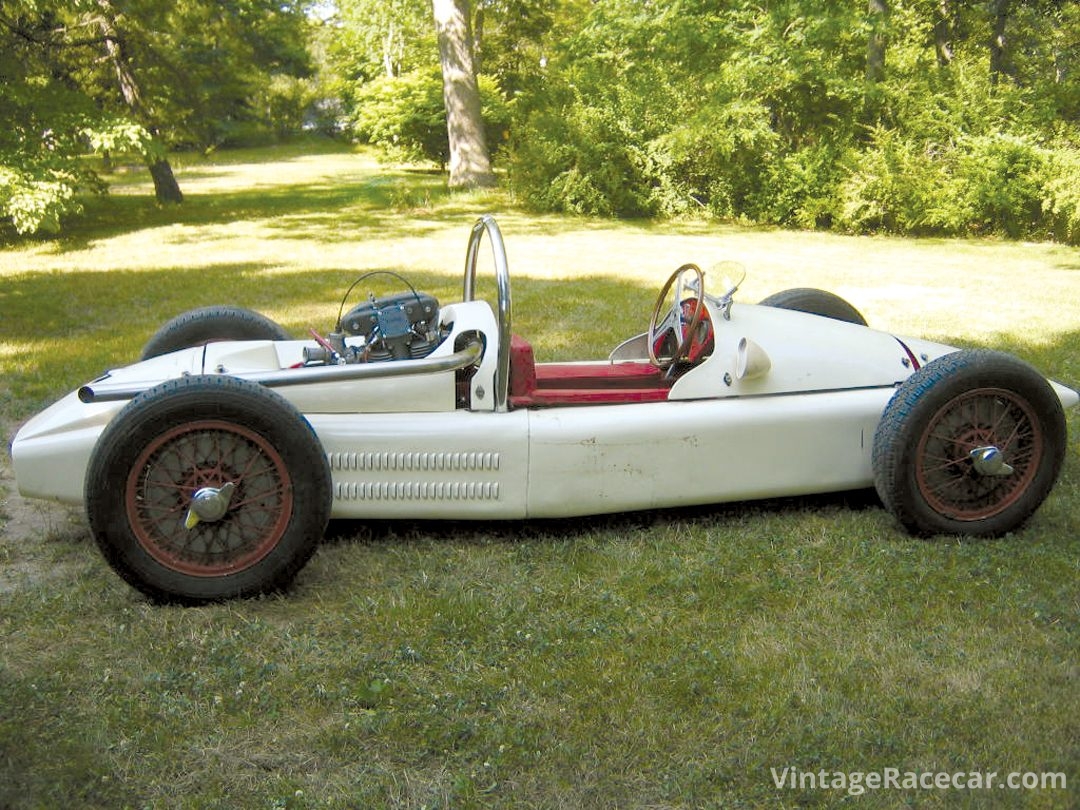
Do you know of a Hidden Treasure? If so, send your photos and stories to Mark at mbrinker@sportscardigest.com


